Housing development bulldozing Urban Forests
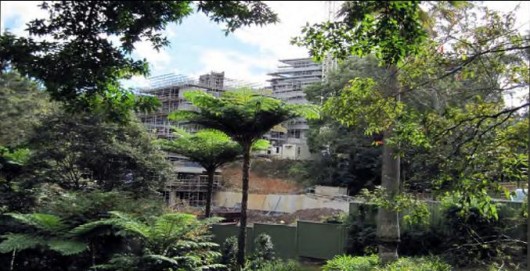 The disappearing urban forest of Ku-ring-gai, Sydney’s North Shore
Biodiversity-linkages within Urban Forest are provided by
connecting gardens, street trees, golf courses, ovals and parks.
The disappearing urban forest of Ku-ring-gai, Sydney’s North Shore
Biodiversity-linkages within Urban Forest are provided by
connecting gardens, street trees, golf courses, ovals and parks.All link together with surrounding protected reserves to form corridors and habitat for remaining urban wild-life…..
.
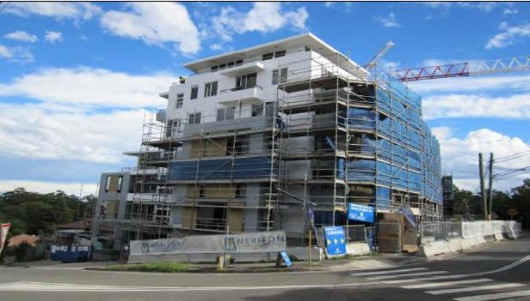 …however improper zoning allows biodiversity linkages to be lost
when land area and soils are cumulatively removed.
…however improper zoning allows biodiversity linkages to be lost
when land area and soils are cumulatively removed.By this process the regenerative capacity of native and nonnative Urban Forest vegetation is displaced forever. .
~ J. Harwood
.
Ku-ring-gai….’a community under the canopy’
It is often said that the Ku-ring-gai community lives ‘under the canopy‘ because of the three large national parks and multitude of natural spaces in our local government area. To illustrate this idea, the Ku-ring-gai Council logo features a grouping of Sydney Blue Gums – a native tree prominent in the local landscape.
The five trees represent the five wards – Gordon, St Ives, Comenarra, Roseville and Wahroonga. The green typifies the Sydney Blue Gum and the band of blue above it depicts the bright sunlit sky which is visible through the swaying tree canopies.
The light brown graphic element below the trees acknowledges the area’s Aboriginal heritage. It includes indigenous symbols for a campsite, mountains, kangaroo, boomerang and emu provided by Aboriginal artist Nikki McCarthy. It also includes a pair of stingrays found in an Aboriginal rock carving in Ku-ring-gai Chase National Park, used in the logo to represent the Guringai people, sometimes known as ‘the stingray people’.
The black area at the bottom of the logo represents the understorey of the Sydney Blue Gum Forest as well as providing an important link to the traditional owners of the land by taking the same meaning as in the Aboriginal flag, with the black representing Aboriginal people.
The Ku-ring-gai Council motto, ‘serviendo guberno’, means ‘I govern by serving’ and has been used by Council since 1928. It is included in the logo to reaffirm Council’s fundamental commitment to serving the community.
[Source: Ku-ring-gai Council, ^http://www.kmc.nsw.gov.au/www/html/1881-council-logo.asp].
What is so special about Ku-ring-gai?
Ku-run-gai is an elevated region mostly wet sclerophyll forest ecology of high conservation value, including the endemic Blue Gum High Forest. The region is coming under relentless destruction for housing development and so its natural values are steadily disappearing.
‘Ku-ring-gai‘ derives its namesake from Mount Ku-ring-gai, a ridgeline about 200m above sea level, located about 30km north of the Sydney CBD. Apart from the ridgeline along which the Pacific Highway was built, Mount Kuring-gai consists of steep, heavily wooded hills and gorges. The water drains to the west into Berowra Creek and on the east into Cowan Creek. Both these waterways empty into the Hawkesbury River system. The area receives high rainfall, and its slopes fall steeply towards national parks on three sides – Lane Cove, Garigal and Ku-ring-gai Chase. Other natural features of Ku-ring-gai are its tree canopy (including important remnant Blue Gum High Forest, its wild life, its watercourses and its readily erodable soils.
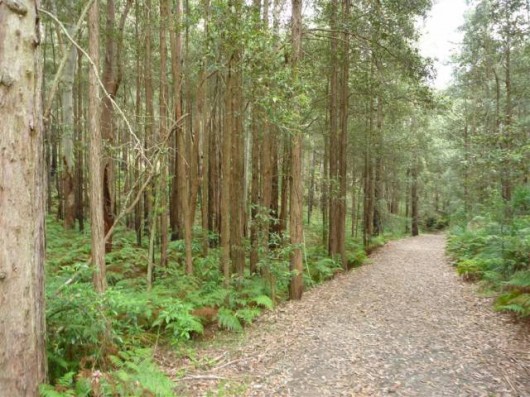 Blue Gum High Forest
Nearby Berowra Valley Regional Park
[Source: ^http://www.wildwalks.com/bushwalking-and-hiking-in-nsw/berowra-valley-regional-park/blue-gum-walk-joe-s-mountain-circuit.html]
Blue Gum High Forest
Nearby Berowra Valley Regional Park
[Source: ^http://www.wildwalks.com/bushwalking-and-hiking-in-nsw/berowra-valley-regional-park/blue-gum-walk-joe-s-mountain-circuit.html]
.
The Guringai Aboriginal people originally inhabited the area between the coast and Berowra Creek. Urgent changes are needed to the New South Wales Planning Act in order to prevent the loss of biodiversity and critical habitat and to consider the cumulative impacts in our future cities. ‘Ku-ring-gai‘ was an Aboriginal word describing the home or hunting ground of the local people, so this is possibly the origin of the name. Another suggested explanation for the name, that is now considered incorrect, was that kuringai was a combination of the words kuri, meaning ‘black duck’ and ngai, meaning ‘self’ (supposedly local people referring to themselves as black).
The township was called Kuring-gai from 1892, but the suburb’s name was changed to Mount Kuring-gai in 1933. The Shire of Ku-ring-gai was first constituted with six councillors in March 1906. Almost all of Ku-ring-gai was designated for residential development as opposed to commercial and industrial developments, and very few blocks of flats were permitted before 1940.
Ku-ring-gai is now engulfed within an encroaching suburbia locally branded as Sydney’s North Shore. The Ku-ring-gai Shire encompasses the suburbs of Roseville, Lindfield, Killara, Gordon, Pymble, Turramurra, Warrawee and Wahroonga, straddling the ridge that carries the railway from North Sydney to Hornsby; and St Ives, straddling Mona Vale Road as it heads towards the coast.
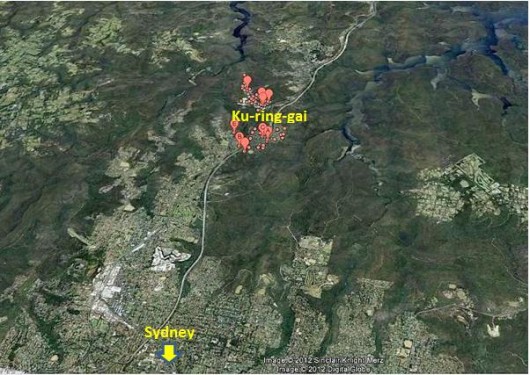 The relative position of Ku-ring-gai
on the northern outer tentacles of Sydney Metro sprawl
(Google Maps, 2012)
.
The relative position of Ku-ring-gai
on the northern outer tentacles of Sydney Metro sprawl
(Google Maps, 2012)
.
Ku-ring-gai’s situation represents an example of insatiable corporate land use development being allowed to run roughshod over ecological values. Forested areas are being bulldozed, destroying remnant and critical corridors for flora and fauna. Ku-ring-gai contains urban forests of important biodiversity, yet regional government planning is being corrupted by wealthy developers and their wealthy lawyers to change laws to allow the bulldozers in. Remnant forest by remnant forest is being supplanted by high rise. The cumulative impacts on these critical habitats are un-reported tragedies.
[Sources: 2. ‘Mount Kuring-gai’, by Joan Rowland, 2011, in ‘Dictionary of Sydney’, Dictionary of Sydney Trust,^http://www.dictionaryofsydney.org/entry/mount_kuring-gai , 2. Ku-ring-gai Historical Society, 1996, ‘Focus on Ku-ring-gai: The Story of Ku-ring-gai”s Growth and Development’, ^http://www.kmc.nsw.gov.au/www/html/169-history-of-ku-ring-gai-council.asp ]
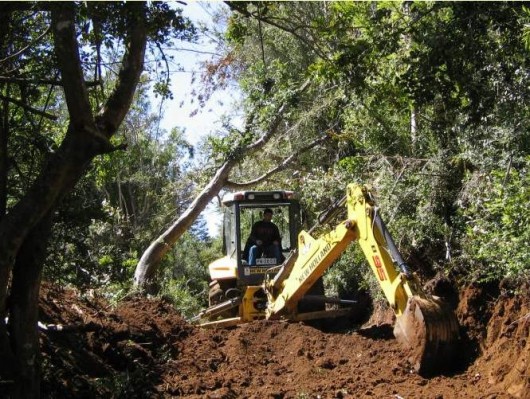 .
.
Ku-ring-gai’s built heritage
..
Ku-ring-gai’s built heritage features some of the best in NSW – twenty-seven precincts were recommended by the National Trust in 1997 as Urban Conservation Areas. They include not only fine examples of Federation and Inter-war architecture, but many of these precincts display an overall quality and consistency that mark them out as being of State and National heritage significance.
.
Case in Point: ‘Tulkiyan House Museum’
Built in 1913, Tulkiyan is an important example of the work of Bertrand J Waterhouse, a prominent Sydney architect. In Federations arts and crafts style, it displays asymmetrical, dominant gables; shingled roof and wall finishes; and bay windows. The interior includes elaborate plaster ceilings, Art Nouveau style gas fireplaces and built-in cupboards – an innovation at the time.
The Donaldson family lived in the house continuously for over 80 years from 1913, during which the original style was maintained. The home and its contents provide an insight into upper middle class life in Sydney during the first half of the 20th century.’
[Source: ‘Tulkiyan House Museum’, Ku-ring-gai Council, ^http://www.kmc.nsw.gov.au/www/html/1369-tulkiyan-house-museum.asp].
‘2009: Ku-ring-gai’s built heritage comes under threat of high rise’
[Source: ‘National Trust warns on Ku-ring-gai Planning Panel plan’, 20090814, by Katrina Adamski, North Shore Times, ^http://north-shore-times.whereilive.com.au/news/story/high-density-plans-ripping/].
THE heart of Ku-ring-gai is being ripped out with the possible demolition of 692 heritage homes.
This is the view of the National Trust, which has taken a stance against the Ku-ring-gai Planning Panel’s proposals to build medium- to high-density development in the area’s six town centres.
The trust’s core programs director Scott Woodcock said its members were trying to protect the natural and cultural heritage of Ku-ring-gai.
“The scale and magnitude of the threat to heritage buildings is unprecedented,” Mr Woodcock said. “The outrage is still prevalent in the community following the public meeting attended by 1000 people and more than 1800 submissions were received.
“At the National Trust, we are still receiving calls every day about what they can do to stop the Planning Minister (Kristina Keneally) from gazetting the plans. People have also been calling for us to organise a rally but we would prefer to speak to the minister first.”
 Kelly and Keneally
Pro-development NSW Labor planning ministers of yore
Sydney growthist lobby mantra – “Sydney must grow!”
Kelly and Keneally
Pro-development NSW Labor planning ministers of yore
Sydney growthist lobby mantra – “Sydney must grow!”
.
Heritage buildings under threat of demolition in National Trust conservation areas include 1 Maclaurin Pde, Roseville; the Spanish mission-style church, 1186 Pacific Highway, Pymble; Tulkiyan 707 Pacific Highway, Gordon; and 2 Victoria St, Roseville.
The former Gordon home of Harbour Bridge designer John Bradfield could also be bulldozed under the proposal. Mr Woodcock said people were rightly concerned about losing their homes or having a six-storey development built next door to them.
“The spectacular P&O-style house at 1 Maclaurin Parade is not on the council’s heritage list or in a council conservation area,” he said. “It is within the trust’s urban conservation area, but even if it was individually saved, it would be surrounded by high-rise. The church and Tulkiyan are listed by the council, but even if they were kept they could be surrounded by high-rise which would destroy their curtilage. Practically the whole of Victoria St, Roseville, is under threat between Hill St and Spearman St. Only the school isn’t zoned for higher density’”
But Planning Minister Kristina Keneally said there was “no requirement” for the 700 heritage homes to be demolished. “The plan actually introduces heritage conservation zones,’’ Ms Keneally said. “In fact, the Bradfield house is proposed for heritage listing under the plan put forward to the department. “It is important to remember that these are people’s homes. It is up to an individual home owner as to what they do with their property.’‘
The minister said the government was identifying places, particularly around rail lines, where increased density and a different housing type could be accommodated.
Ms Keneally said only 6% of Ku-ring-gai was covered by the town centres plan.
.
Keneally in 2009 : “Sydney will grow and it will change …
it is projected to reach a population of about 6 million by 2036,
up by about 1.7 million people from 2006.”
.
But Opposition Leader Barry O’Farrell said almost 80% of Ku-ring-gai urban conservation areas would be destroyed under the State Government’s planning proposals. Mr O’Farrell said the National Trust report confirmed Labor’s statewide attack on heritage conservation.
“(Premier) Nathan Rees and (Planning Minister) Kristina Keneally are the Bonnie and Clyde of NSW, stealing the heritage heart out of the state,’’ he said. “These decisions are borne out of the inherent conflict of interest of a minister also being responsible for preservation of heritage items.’‘
He said the National Trust report was as close as you could get to a respected, independent umpire giving Labor a capital F for fail for its “lousy heritage credentials’”.
He said the NSW Liberal/Nationals had already committed, when in office, to appoint a separate heritage minister.
.
Local Reader’s Comments:
.
Denise Hendy writes (20090820):
.
“The ‘planning committee’ meeting at UTS was an insult to our intelligence. It was a total farce from a bulldozer panel committed to wrecking Ku-ring-gai’s leafy outlook. I have recently rejoined the National Trust because I feel they need support from locals to keep this Government on track.
I can’t believe the State Government is allowing our heritage to be torn down. Australia is a young country and has little heritage to show. Obviously these people have never been to visit old communites overseas to see the beauty and wonder of heritage which is important for younger generations to see and realise our history.”.
.
Graham Bode writes (20090815):
.
“Undoubtably it is a serious problem and with this government having two years to run it is just not going to get better. The government or its planning advisers have a view of Sydney as being something different to what it really is.
We should grow from where we are and where we have come from. Unfortunately neither the council or the state opposition are in the position to achieve a better outcome, to change the planning strategy.
As a writer to Saturday’s Sydney Morning Herald suggested a more vigorous but peaceful approach is required. Perhaps being a nuisance to the government and vigorous protesting may be the only options left open to us.”
.
The following article below ‘Mayday for Urban Forests‘ was contributed by Janet Harwood of the local community group ‘Friends of Ku-ring-gai Environment Inc.’ (FOKE)
.
Friends of Ku-ring-gai Environment
‘FOKE is a community group with membership drawn from across Ku-ring-gai, opposing inappropriate and unsympathetic overdevelopment within Ku-ring-gai, and defending and promoting the cultural and natural heritage of Ku-ring-gai.
‘FOKE is not anti-development. We work on behalf of residents and friends for the maintenance of Ku-ring-gai’s heritage and the enhancement of the existing traditional character and amenity of its environment, both built and natural.’
FOKE, PO Box 403, Killara, 2071, ^www.foke.org.au
.
‘Mayday for Urban Forests’
by Janet Harwood, FOKE (June 2011)
.
Urgent changes are needed to the New South Wales Planning Act in order to prevent the loss of biodiversity and critical habitat and to consider the cumulative impacts in our future cities. Biodiversity is critical infrastructure – the basis of life. Urban Forests and natural habitat remnants are the last biodiversity hotspots in cities. They are increasingly critical flora and fauna corridors. The significance of biodiversity to humans is greater than is understood. As humans seek health, well being and survival in future cities, cumulative impacts on these critical habitats are un-reported tragedies.
We are in ‘the urban age‘. The United Nations reports that more than half the world’s population lives in urban areas since 2007. (1) By 2050 it will be 70%. Australia’s urbanisation is higher. Scientists have long known human physical and mental health and well being depends on biodiversity. (2) As biodiversity decreases, human choices for survival shrink. (3) Scientists say its irreversibility makes biodiversity loss the most important issue faced by humanity (Dale and Hill 1996). Biodiversity loss is the most significant environmental problem facing Australia (Lindenmayer, “On Borrowed Time” 2007).
In his book ‘Collapse’ Diamond notes that removal of forests, and subsequent ‘landscape amnesia‘ and ‘creeping normalcy‘, play major roles in collapse of societies. (4) He points to policy makers for failure to perceive the problem of forest removal.
.
What is an ‘Urban Forest’?
.
An ‘Urban Forest‘ is existing biodiversity in protected reserves, as well as connected, but unprotected, native and non-native vegetation corridors in golf courses, public parks, ovals, residential streets and private gardens. Especially in environmentally sensitive areas, all linked natural habitat remnants, important seed-bank and sensitive soils, together, form part of precious Urban Forest.
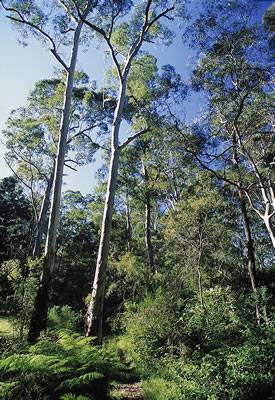 ‘Blue Gum High Forest’
in and around Ku-ring-gai
‘Blue Gum High Forest’
in and around Ku-ring-gai
.
Rare, urban biodiversity still exists in listed critically endangered ecological communities, part of Urban Forest within thirty rail minutes of the Sydney GPO – but for how long?
Urban Forest in Sydney occurs most densely in the north, north west of Sydney and also in southern and western Sydney. Rapid urbanization means biodiversity in the un-protected part of Urban Forest is vulnerable to zoning for development.
Due to the importance of biodiversity to human health in future cities, Urban Forest needs urgent protection, through legislation. (Ed: Biodiversity is also important for its own existence rights, beyond anthropocentric benefit).
Today, lands most desirable to protect have become the lands most likely to be developed. The word “biodiversity” appears seldom, if at all, in land-use planning policy platforms and legislation governing the planning of city futures. (5)
The absence of specific protective zoning for Urban Forest potentially means the application of ‘inner-city zoning‘ in unique ‘Environmentally Sensitive Areas‘ (ESAs). Unless urgent steps are taken for intergenerational equity in planning legislation including giving protection to Urban Forest by specific zoning, and requiring consideration of the cumulative impacts in zoning for development, we will almost certainly not have Urban Forest in the future.…however improper zoning allows biodiversity linkages to be lost when land area and soils are cumulatively removed.
By this process the regenerative capacity of native and non-native Urban Forest vegetation is displaced forever.
.
How do we know Urban Forest is disappearing?
.
Trees prevent development and their absence facilitates it. Cascading environmental damage commences at, or before, the point of zoning for development. Since each zoning and each development is assessed on its own, the un-assessed cumulative impact of zoning for development quickly turns an environmentally sensitive area (ESA) into a construction zone.
Zoning is the most profitable point in the development process. Zoning is also when the greatest damage is done to the environment.
‘Tree Preservation Orders‘ (TPOs) are of little value. Trees die mysteriously and are easily removed. Tree removal proliferates in dense, rare Urban Forest. Reliable tree record and protection of significant trees by local councils is lost. The domino effect of acquisition of properties for development, during zoning, is an insidious process. Most locals do not know when and where houses are acquired for development, which rapidly tears neighbours and neighbourhoods apart. (6)
As newer residents replace long-standing ones, ‘landscape amnesia‘ and ‘creeping normalcy‘ take over, and the once rich Urban Forest becomes an urban myth. Wildlife populations plummet and without habitat, urban biodiversity quickly disappears.
As the cumulative impacts of zoning increase and population pressures rise, tree removal gathers momentum. Golf courses, churches, schools and other institutions responding to these expansion pressures find the need to remove not one or two trees, but tens and hundreds of trees. This is in addition to tree removals by developers and individuals.
After development has occurred, the hundreds of saplings replanted in the remaining soils cannot replace habitat provided by foliage, branches and hollows of mature trees in an Urban Forest. In this way, environmentally uninformed decision making and cumulative zoning quickly destroys efforts, by council staff in the field and volunteers, to protect and restore biodiversity.
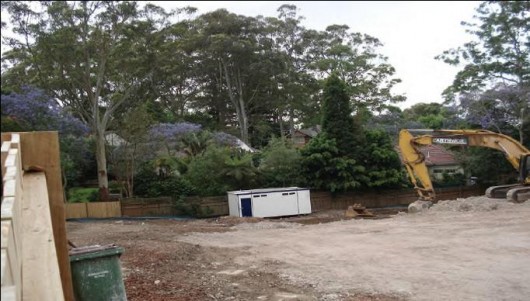 As sites are cumulatively cleared, the very basis for fragile Urban Forest
(i.e. rich soils and seed-bank)
is being excavated and removed forever by Improper Planning.
As sites are cumulatively cleared, the very basis for fragile Urban Forest
(i.e. rich soils and seed-bank)
is being excavated and removed forever by Improper Planning.
.
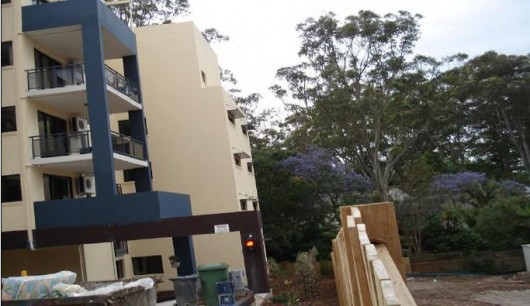 Replacement building side set-backs leave no room for tall canopy trees,
which once formed bio-links.
Improper Zoning permits a footprint totally inappropriate
for an Environmentally Sensitive Area (ESA)
Replacement building side set-backs leave no room for tall canopy trees,
which once formed bio-links.
Improper Zoning permits a footprint totally inappropriate
for an Environmentally Sensitive Area (ESA)
.
The problem lies in the overarching power of land use planning legislation.
.
State (TSC Act)* and national (EPBC Act)* environmental legislation has failed to prevent biodiversity loss in NSW. The dominance of an ecologically un-informed NSW planning system, corrupted by failures, faults and flaws in that system, forces unreasonable concessions from environmental departments and regulatory bodies, resulting in irreparable biodiversity loss. (7).
The NSW planning system can implement zoning with negative impact where “critical habitat” provisions are not applied. Further, cumulative removal of vegetation and regenerative capacities (land area and soils) of Urban Forest is not assessed in land-use planning. A scientific study of cumulative impacts says, “while each single land use change results in a negligible impact, the accumulation of these individual changes over time and within a landscape or region may constitute a major impact.” (8) Neither state nor federal legislation considers the destructive effect of many zonings overlaying each other.
The NSW Government’s Standard Local Environment Plan (LEP) (Ed: bureaucratic one-size fits all planning) is full of unknown perils for an area of high biodiversity. Its ‘Standard Zoning‘ approach certainly will allow smaller blocks of land within the range of Urban Forest. It will allow more development in the very soils needing more protection, to maintain current biodiversity levels in irreplaceable Urban Forests. (9).
.
Urban Forest has far greater long term economic value than construction, which excavates and trucks away the very basis of fragile flora and fauna habitats – environmentally sensitive soils.
That the resulting real estate is now being sold overseas and to investors – makes zoning for development, in areas of rare Urban Forest, a highly questionable process.
.
The NSW planning system appears un-aware of the intrinsic value of, and the method and need for, protecting land for its delicate biodiversity. Clearly, a lack of understanding of the value of biodiversity is demonstrated by the nature and number of zonings allowed in environmentally sensitive areas (ESAs).
.
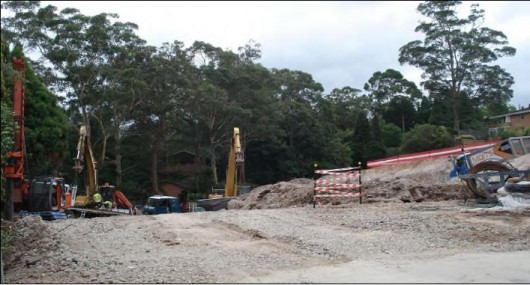 Blue Gum High Forest site damaged by “moonscaping” unassessed under one LEP.
Damage from an adjacent development is cumulatively allowed under another LEP.
Blue Gum High Forest site damaged by “moonscaping” unassessed under one LEP.
Damage from an adjacent development is cumulatively allowed under another LEP.
.
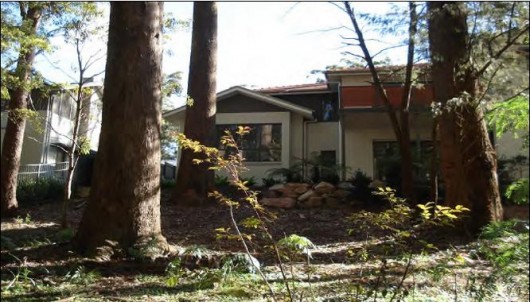 Building too close to established trees is the result of urban densification in Urban Forest.
The cumulative impact of inappropriate zoning is further tree removal.
Building too close to established trees is the result of urban densification in Urban Forest.
The cumulative impact of inappropriate zoning is further tree removal.
.
Zoning for development is an un-recognized key threatening process for threatened species. The Planning legislation (EP & A Act)* genuinely fails to protect biodiversity. BioBanking (TSC Act) treats biodiversity protection as a financial transaction. The policy platform of the Planning Institute of Australia (PIA) fails to mention biodiversity. (10)
With little protection in legislation and policy, zonings for development have become key threats to rare, urban biodiversity.
In present land-use planning “sustainability” simply means catch-up, non-diverse sapling planting in remaining soils, after massive concrete footprints are made. Tellingly, a biodiversity strategy is not a gazetted instrument. It is not officially part of the land-use planning process, nor is it signed off by ministers, to precede the threatening process of zoning.
Media debate and public discourse of development in biodiversity rich areas. In the push to increase human population in Sydney’s North and North West, no media debate has been conducted regarding Urban Forest’s contribution to the Australian biodiversity pool in terms of the critically endangered ecological communities found in these areas. Yet Local Government Areas (LGAs) like Hornsby, Ku-ring-gai and Lane Cove are strategic wildlife corridors between national Parks. (11)
Examined in the media mainly in terms of dwelling numbers allocated and proposed, the unexamined attributes of Urban Forest are matters of national significance. A wealth of fauna and flora is being allowed to vanish now, from the creeping cumulative effects, of multiple zonings for development, on corridors of non-human habitat.
It is urgent to change land-use planning to protect precious urban biodiversity. Rather than displace our last Urban Forests, we should “bring forests into the cities”. (12)
City public lands, open-air carparks, railway corridors and vacant urban areas should be biodiversity refuges, community gardens and green spaces, to expand rare Urban Forest for human health. Local Council development planning directors are equipped to assess and report negative cumulative impact on Urban Forest. However, ecological qualification and direct responsibility, for biodiversity conservation and environment protection, are needed at director level. Policy makers and planners know that existing Urban Forest is easier to protect, than to re-forest. (13)
Urban Forests are crucial. In growing cities, once Urban Forests are removed and soils excavated, making amends is virtually impossible. Bio-links and rare urban biodiversity are of national importance and future job sources. The permanent loss of biodiversity (critical biological infrastructure) in Urban Forest is therefore a matter of national interest and security.
Storms, bushfires, droughts and flooding rains are removing flora and fauna habitats. (14)
Human development, inextricably tied to biodiversity, soils and Urban Forests, is also cumulatively removing the shared life support. (15)
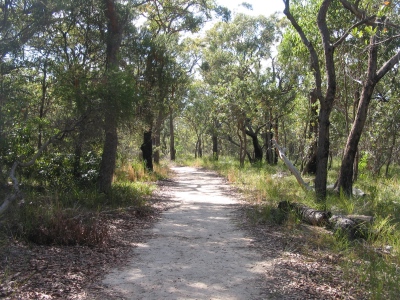 Mount Ku-ring-gai walking track
Mount Ku-ring-gai walking track
.
Important Questions:
.
Why are Urban Forests being allowed to disappear?
Why are protective legislative provisions over-ridden?
Why is ‘critical habitat‘ not declared more rigorously?
Is biodiversity conservation a source of future employment?
Should Urban Forest areas be given a new category of protective rezoning?
.
by Janet Harwood, June 2011 (Edited). janetsh@optusnet.com.au‘Our Future is the Natural World’
.
* Abbreviations used above:
TSC Act: ‘The NSW Threatened Species Conservation Act 1995’
EPBC Act: ‘The Environment Protection and Biodiversity Conservation Act 1999, the Australian Government’s central environmental legislation’
EP & A Act: ‘The NSW Environmental Planning & Assessment Act 1979’
.
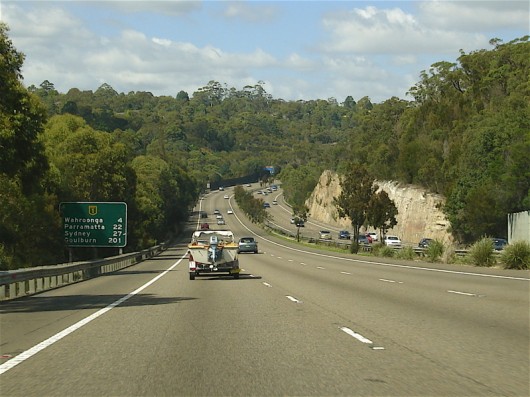 Six-lane freeway carved into Mount Ku-ring-gai
Six-lane freeway carved into Mount Ku-ring-gai
.
‘Urban sprawl is ecological genocide – an inexcusable hate crime’
~ Editor
.
Notes and Further Reading:
.
1. UN-Habitat bi-annual State of World Cities report 2010, ^http://www.unhabitat.org/pmss/listItemDetails.aspx?publicationID=2917 (16mb)
(The United Nations Human Settlements Programme, UN-HABITAT, is the United Nations agency for human settlements. It is mandated by the UN General Assembly to promote socially and environmentally sustainable towns and cities with the goal of providing adequate shelter for all. Check website: ^http://www.unhabitat.org )
.
2. ‘Biodiversity Conservation: A Decision Making Context‘ (1996), book by Dr. Ann Dale and Prof. Stuart Hill
.
3. ‘Sustaining Life How Life depends on Biodiversity‘ (2008), book by Chivian E. and Bernstein A. (eds), Oxford University Press.
.
4. ‘Collapse How Societies Choose to Fail or Survive‘ (2005), book by Jared Diamond, Penguin Books.
.
5. See Policy platform of Planning Institute of Australia (PIA) and other urban projects and national urban policy.
.
6. See documentary film “State of Siege” in which activist film makers Dennis and Diane Grosvenor explore the destructive phenomenon of development and the politics behind it. ^http://www.imdb.com/title/tt0070959/
.
7. Standard Instrument (Local Environmental Plans) Order 2006, current version for 6 January 2012 to date, NSW Government legislation website, ^http://www.legislation.nsw.gov.au/maintop/view/inforce/epi+155+2006+cd+0+N
It is noted that NSW Environmental Zone protections available have failed to protect biodiversity and pressures from human development apply forcefully: when legislative provisions to declare “critical habitat” are not applied, where protective legislation is overridden; where cumulative impacts are not assessed; where systemic flaws and gaps continue to operate, biodiversity strategies are not given the status of gazetted instruments – and Departments of Environment are subsumed and/or not afforded the authorities they require, to genuinely protect biodiversity.
.
8. ‘Estimating the cumulative effects of development on wildlife habitat‘ (1998), book by David M. Theobald, James R. Miller and N. Thompson Hughes
.
9. ‘Environmental Baseline Study’ (2000), Ku-ring-gai Council website ^http://www.kmc.nsw.gov.au/www/html/212-research-studies-papers-and-reports.asp
.
10. Planning Institute of Australia website, ^http://www.planning.org.au/policy/policy-platform
.
11. Ku-ring-gai Council’s ‘Biodiversity Strategy‘, Appendix 6: Biodiversity Data, p.29, ^http://www.kmc.nsw.gov.au/resources/documents/Biodiversity_Strategy_May_2006_final_for_adoption1[1].pdf [>Read Document (1.1MB) ] .
12. ‘Our Future is the Natural World‘, by J. Harwood, in a submission to ‘National Policy Unit Our Cities: Building a Productive, Sustainable and Livable Future’ 2011
.
13. Food and Agricultural Organisation of the United Nations (FAO), ^http://www.fao.org/docrep/005/t1680e/T1680E01.htm “Planning is important because trees are very often considered as an afterthought once development has taken place, rather than being incorporated at the original design phase. An integrated approach implies the participation of many different organizations – local councils, municipal and national planning bodies, departments, etc. Systematic management entails regulated tree management; operations such as planting, pruning, and felling must all be conducted in an organized manner, at the appropriate time. This is certainly more theoretical than actual in most urban settlements (in developed as well as developing countries); it also implies a greater degree of control over, or at least information about, all trees on all land types than usually exists.”
The FAO experience in ‘Urban Forestry‘ clearly indicates that more action is needed to protect existing Urban Forests (as defined). Zoning for protection of Biodiversity in Urban Forests (as defined), urgently needs to be specifically instituted through Planning legislation (EP&A Act). Local biodiversity strategies (TSC Act) need to be properly signed off by ministers and gazetted. Only the powerful land-use planning legislation can ensure that “critical habitat” in Urban Forests is not lost. Protective zoning for Urban Forest(as defined) and the complicating and devastating effects of un-assessed cumulative environmental impacts need to be immediately considered in Planning Legislation (EP&A Act).
.
14. ‘The Future of the Wild Radical Conservation for a Crowded World‘ (2006) book by J. Adams, Beacon Press, Boston, USA.
.
15. The basis for natural terrestrial habitats – Fertile soils:
“An estimated four million bacterial species occur in a ton of fertile soil, comprising ten billion or so organisms to each gram of weight. Although invisible, the collectivity of these organisms in soils and elsewhere is vital to our continued existence. Similarly, while a few thousands of the millions of insect species in the world afflict us as pests and disease carriers, we depend on the rest for our very lives. If beneficial insects did not flourish, most of the land ecosystems of the world would collapse and a good part of humanity would perish with them…….. For many reasons, not least our own well being, we need to take care of the rest of life”
by E. O. Wilson Foreword in the book ‘Sustaining Life How Life depends on Biodiversity‘ by Chivian E. and Bernstein A. eds. (2008) for The United Nations Programme.
.
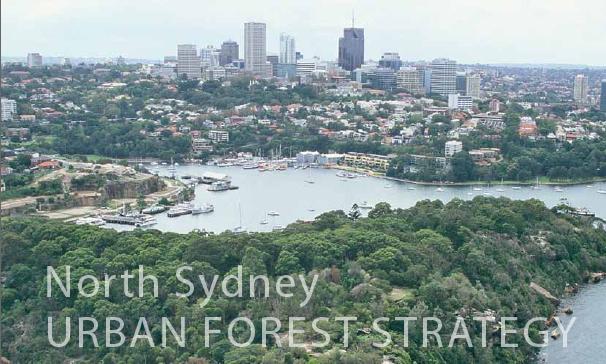 Urban Forest Strategy is a reality in nearby North Sydney
Urban Forest Strategy is a reality in nearby North Sydney
.
Tags: biodiversity-linkage, Blue Gum High Forest, built heritage, creeping normalcy, critical habitat, Environmentally Sensitive Areas, FOKE, Friends of Ku-ring-gai Environment, Guringai Aboriginal, improper zoning, inner-city zoning, Ku-Ring-Gai, landscape amnesia, Mount Ku-ring-gai, overdevelopment, Standard Local Environment Plan, Standard Zoning, Sydney North Shore, the urban age, Tree Preservation Orders, Urban Conservation Areas, urban forest
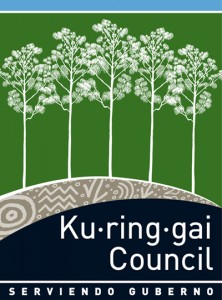
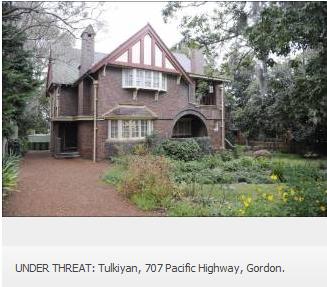

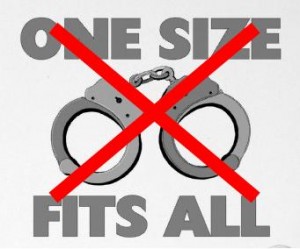










Minister for “sustainable” population, Tony Burke, refused to set an “arbitrary” population number for Australia, despite research and advisory panels. As it is, it is growth, growth and more growth without a target, plan or limit. Immigration levels keep increasing, and many visas are uncapped. Where are people meant to live? While economists and governments might admit that prolific breeding of animals can cause them to consume their space and natural resources, such impacts of overpopulation makes humans exempt! The property investment and development industry is a powerful lobby group, and they demand perpetual economic growth to fill their properties! Tony Burke must do his duty, and replace Growth-based immigration levels with Replacement-levels of immigration – and stabilize our population before our cities, our lifestyles, and natural assets are destroyed.